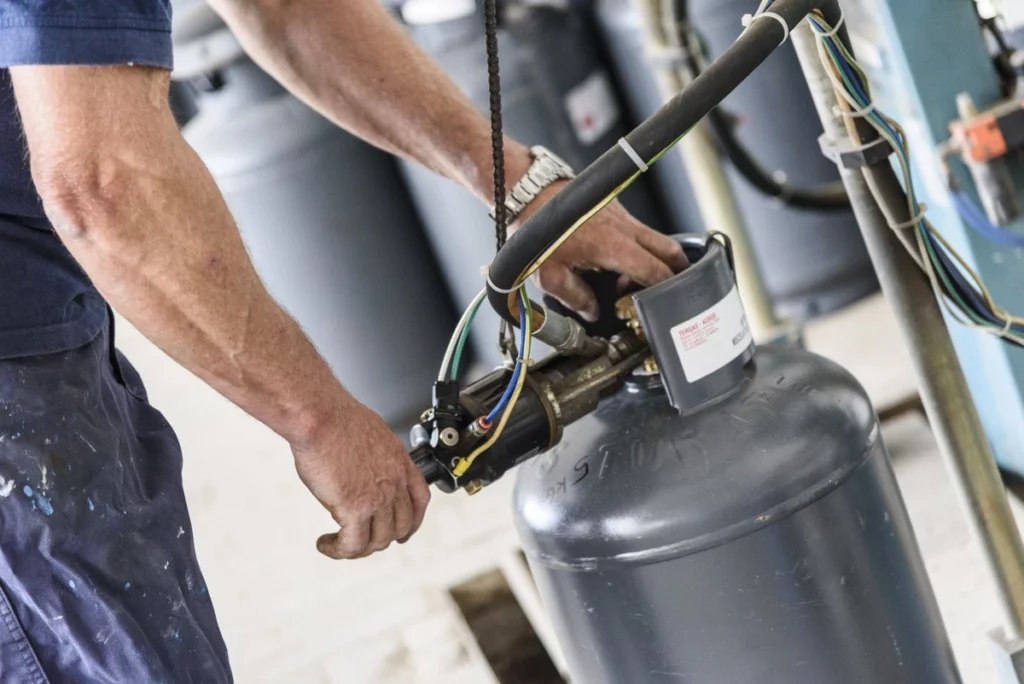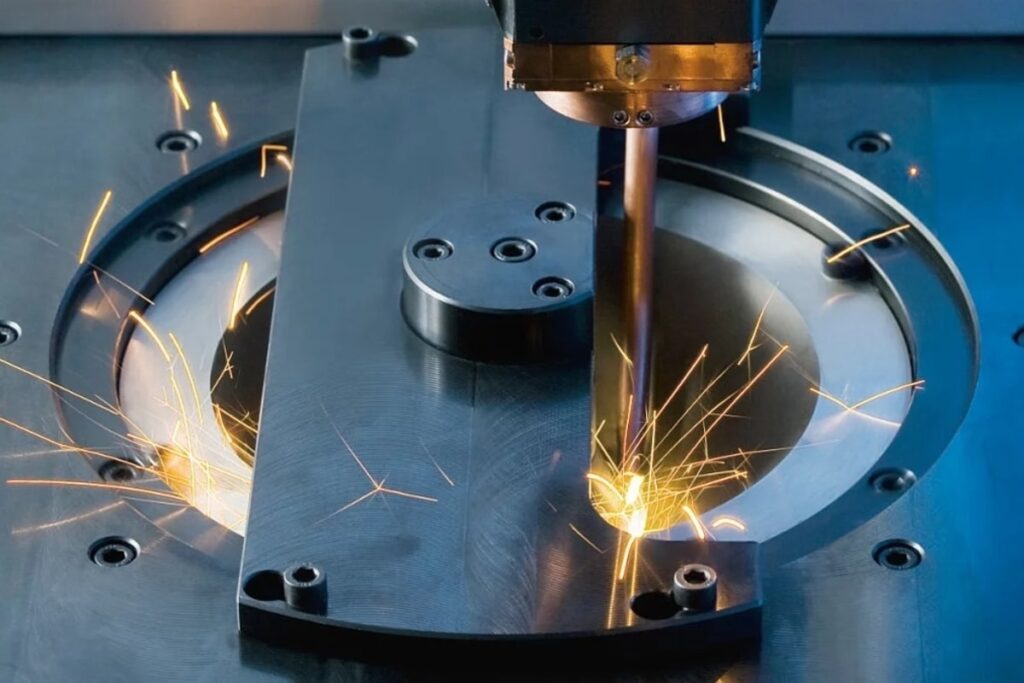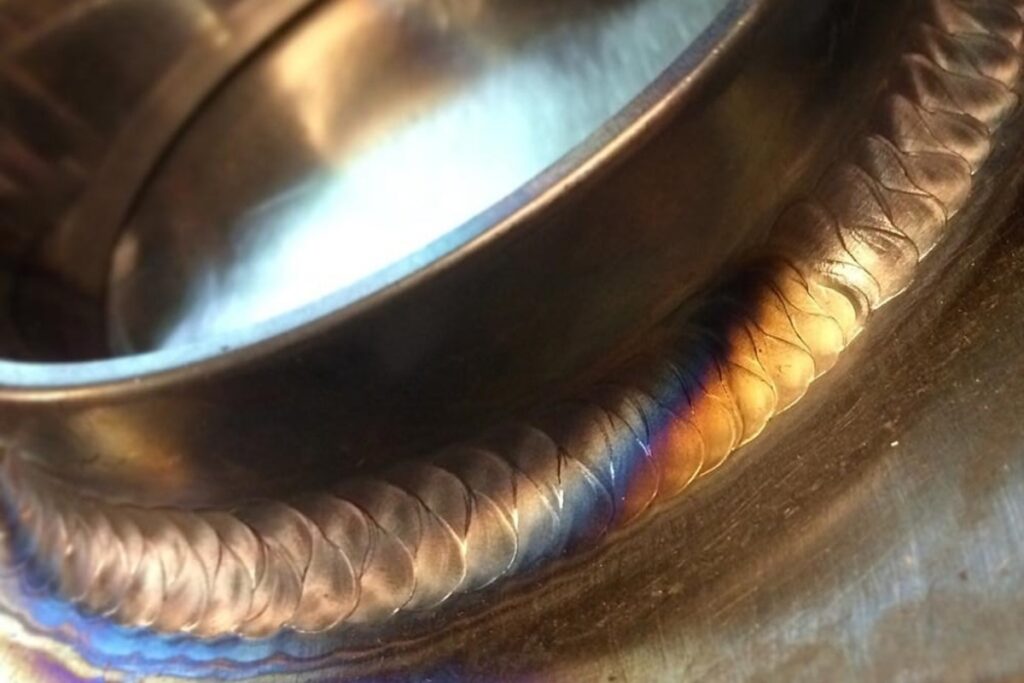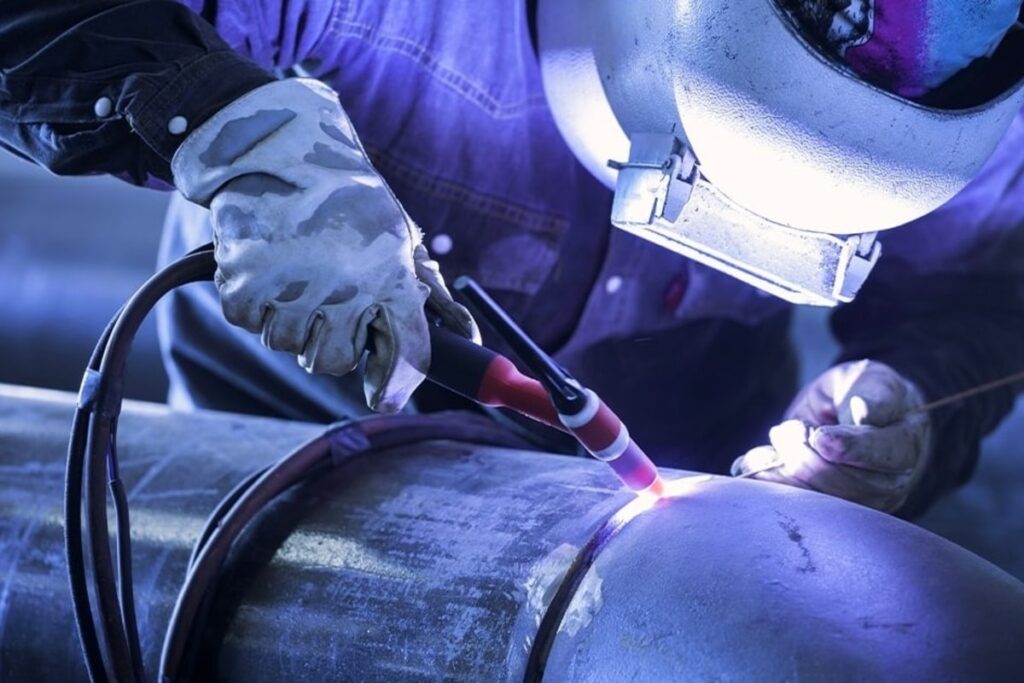The most common question asked by friends who want to learn TIG (tungsten inert gas) welding is “how long does an argon bottle last?” It’s important to know that the answer depends on several factors.

The first one being whether it was used in pure argon mode. However, the same can’t be said about the argon-oxygen mixture as many other variables are involved in this case, which reduces its life span significantly.
This article aims to answer the above question along with some guidelines related to maximizing the usage of argon and minimizing the possible loss due to leakage and evaporation.
Let’s start by determining how to calculate how long an argon tank will last.
How Long an Argon Tank Will Last for TIG Welding
Before proceeding, there are two key points to keep in mind. First, the smaller the bottle, the shorter the expected lifetime. Second, the higher flow rate means more consumption but still not more than 14.16 liters per minute (lpm), which is roughly equivalent to 30 cubic feet per hour (cfh), depending upon the application.
Also, note that regulators measure either in liters per minute (lpm) or cubic feet per hour (cfh). Where lpm = cfh x 0.4719474432.
The table below shows how long an argon bottle will last on continuous use at 10, 15, and 20 cfh.
| Argon Bottles | @ 10 CFH Flow Rate | @ 15 CFH Flow Rate | @ 20 CFH Flow Rate |
|---|---|---|---|
| 40 CF Tank | 4 hours | 2 hours 40 mins | 2 hours |
| 60 CF Tank | 6 hours | 4 hours | 3 hours |
| 80 CF Tank | 8 hours | 5 hours 20 mins | 4 hours |
| 125 CF Tank | 12 hours 30 mins | 8 hours 20 mins | 6 hours 15 mins |
| 250 CF Tank | 25 hours | 16 hours 40 mins | 12 hours 30 mins |
Please note that the data above do not factor in the kind of material being welded, the purity of the argon used, the temperature of the atmosphere, and the frequency of switching on and off the regulator.
Factors to Consider When Estimating How Long an Argon Bottle Will Last
Now, coming back to our original question, how long should an argon tank last for tig welding? Well, that depends on several factors, including:
Let us take a look at each factor separately.
How Large Is the Container?
First, the bigger the capacity of the argon bottle, the longer it will last. Why? Because larger containers hold more argon and therefore require lower pressures for effective penetration, thereby increasing longevity.
Is It Pure Argon?
Secondly, if it doesn’t contain oxygen, the life expectancy of argon increases dramatically. The presence of oxygen decreases the efficiency of the argon-arc process, thus reducing the quality of joints produced.
How Warm Is the Ambient Temperature?
Thirdly, the warmer the ambient temperature becomes, the faster the argon molecules move away, resulting in the rapid depletion of argon from the bottle.
What Kind of Material Is Being Welded?
If we talk about pure argon, the amount consumed varies according to the type of workpiece being welded, such as aluminum alloy, steel, etc. Also, metal density is important because lighter metals require less argon pressure than heavier ones.
For example, 15 kg of iron consumes around 30 psi, whereas 15 kg of aluminum requires only two-third (i.e., 20 psi). In general, if a particular piece weighs 15 kg, it needs 25 psi. But, again, the weight also affects the time required to properly work a joint.
Next comes the question of flow rates.
What Is the Argon Flow Rate Used in TIG Welding?
As mentioned earlier, the maximum safe limit is 30 cfh (14.16 lpm) regardless of the size of the bottle, provided the diameter of a steel material remains below 1/4 inches.
Generally speaking, the minimum recommended argon flow rate for TIG welding is 10 cfh (4.72 lpm). Values higher than 30 cfh may result in excessive spatter formation due to too high voltage levels. On the contrary, too low values produce under-penetration, leading to weak spots.
How to Find the Right Argon Flow Rate for Your Welds
To sum up, the best way to determine argon flow rates is through the trial and error method. Here are some helpful tips:
Finally, let me explain how to effectively utilize your argon without wasting it.
How to Safely and Effectively Use an Argon Tank for TIG Welding
1. Use Pure Argon
Firstly, you need to understand the difference between pure Ar and Ar+O2 mixtures. Pure argon mode produces strong deep penetrations, thus making small areas easier to join with minimal burrs.
Whereas argon-oxygen mixes create wider fusible zones, their strength falls short of pure argon. Thus, it is advisable to start learning in argon-only mode before moving toward the argon-oxygen mix.
2. Get Refillable Argon Cylinders
Next, you need to decide whether to buy new argon cylinders or refill old ones. Refillable offer great savings since you can reuse them over and over again. Also, argon refills come with a built-in safety cap to prevent accidental discharge.
3. Fill the Argon Tanks Halfway
Another useful trick involves filling the argon cylinders halfway, leaving the bottom part empty. Once you have completely finished welding, simply turn the tap upside down and release the extra air trapped therein. Doing so helps reduce the possibility of leakage or evaporation.
4. Maintain a Proper Argon Level Inside the Tank
In order to prevent any mishaps, you must always maintain a proper argon level inside the tank. A good practice is to check regularly and replace any leaky bottles or cylinders as soon as possible.
5. Ensure There Are No Leakages
Furthermore, because argon cylinders are extremely heat sensitive, they should never be left unattended. Another thing worth mentioning here is that argon leaks usually happen when the lid gets loose from the screw threads. Always tighten all nuts securely whenever you see any sign of loosening.
5. Be Careful
Since the argon-oxygen mixture is flammable, caution should be taken while handling these containers. Don’t forget to shut down the power switch immediately when opening an empty cylinder. And finally, one word of advice — never ever blow compressed air into argon tanks or try to force open a tight valve for access unless absolutely necessary.
The Bottom Line
Having discussed how long a bottle of argon should last for TIG welding, do not forget to consider your unique circumstances. Also, factor in your welding capabilities and the thickness of the materials.
Additionally, make a list of the potential causes for your argon tank to deplete more quickly. For a number of good reasons, you should get yourself a bigger tank of argon shielding gas.
Darell is a Certified Welding Engineer (CWEng) with over 23 years of expertise in TIG, MIG, MAG, dual flux, and stick welding. He is a senior welding engineer who has a desire to share his experience. Visit unwelded.com and join Darell as well as other welding enthusiasts in obtaining fabrication knowledge, amazing welding gadgets, and useful welding insights.



